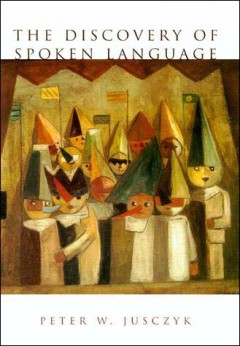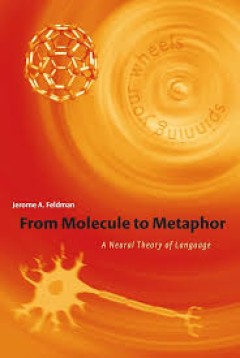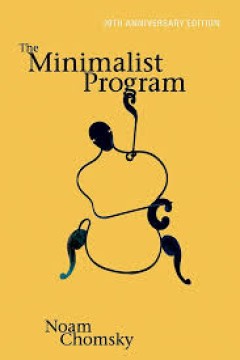Filter by

The discovery of spoken language
"A Bradford book."The Discovery of Spoken Language marks one of the first efforts to integrate the field of infant speech perception research into the general study of language acquisition. It fills in a key part of the acquisition story by providing an extensive review of research on the acquisition of language during the first year of life, focusing primarily on how normally developing infant…
- Edition
- -
- ISBN/ISSN
- 9780262315869
- Collation
- 1 online resource (xii, 314 pages).
- Series Title
- -
- Call Number
- -

Subjunctive Conditionals: A Linguistic Analysis
Ippolito proposes a compositional semantics for subjunctive (or would) conditionals in English that accounts for their felicity conditions and the constraints on the satisfaction of their presuppositions by capitalizing on the occurrence of past tense morphology in both antecedent and consequent clauses.OCLC-licensed vendor bibliographic record.
- Edition
- -
- ISBN/ISSN
- 9781461943273
- Collation
- 1 online resource (xii, 159 pages).
- Series Title
- -
- Call Number
- -

Electric Words: Dictionaries, Computers, and Meanings
"A Bradford book."The use of computers to understand words continues to be an area of burgeoning research. Electric Words is the first general survey of and introduction to the entire range of work in lexical linguistics and corpora -- the study of such on-line resources as dictionaries and other texts -- in the broader fields of natural-language processing and artificial intelligence. The auth…
- Edition
- -
- ISBN/ISSN
- 9780262286244
- Collation
- 1 online resource (viii, 289 pages) :illustrations.
- Series Title
- -
- Call Number
- -

The Elm and the Expert: Mentalese and Its Semantics
"A Bradford book."OCLC-licensed vendor bibliographic record.
- Edition
- -
- ISBN/ISSN
- 0585020515
- Collation
- 1 online resource (xii, 128 pages) :illustrations.
- Series Title
- -
- Call Number
- -

Flexibility Principles in Boolean Semantics: The Interpretation of Coordinati…
An investigation of the logical flexibility principles needed for a formal semantic account of coordination, plurality, and scope in natural language.Since the early work of Montague, Boolean semantics and its subfield of generalized quantifier theory have become the model-theoretic foundation for the study of meaning in natural languages. This book uses this framework to develop a new semantic…
- Edition
- -
- ISBN/ISSN
- 9780262286374
- Collation
- 1 online resource (x, 297 pages) :illustrations.
- Series Title
- -
- Call Number
- -

Meaning in the brain
An argument that the meaning of written or auditory linguistic signals is not derived from the input but results from the brain's internal construction process. When we read a text or listen to speech, meaning seems to be given to us instantaneously, as if it were part of the input. In Meaning in the Brain, Giosue Baggio explains that this is an illusion created by the tremendous speed at which…
- Edition
- -
- ISBN/ISSN
- 9780262347198
- Collation
- 1 online resource (xxiv, 348 pages) :illustrations (chiefly color)
- Series Title
- -
- Call Number
- -

From molecule to metaphor: A Neural theory of language
"A Bradford book."In From Molecule to Metaphor, Jerome Feldman proposes a theory of language and thought that treats language not as an abstract symbol system but as a human biological ability that can be studied as a function of the brain, as vision and motor control are studied. This theory, he writes, is a "bridging theory" that works from extensive knowledge at two ends of a causal chain to…
- Edition
- -
- ISBN/ISSN
- 9780262272544
- Collation
- 1 online resource (xx, 357 pages) :illustrations
- Series Title
- -
- Call Number
- -
Translating happiness :a cross-cultural lexicon of well-being
How embracing untranslatable terms for well-being - from the Finnish sisu to the Yiddish mensch - can enrich our emotional understanding and experience. Western psychology is rooted in the philosophies and epistemologies of Western culture. But what of concepts and insights from outside this frame of reference?OCLC-licensed vendor bibliographic record.
- Edition
- -
- ISBN/ISSN
- 9780262344630
- Collation
- 1 online resource (xv, 223 pages)
- Series Title
- -
- Call Number
- -

A Two-Tiered Theory of Control
"This book revives and reinterprets a persistent intuition running through much of the classical work: that the unitary appearance of Obligatory Control into complements conceals an underlying duality of structure and mechanism. Idan Landau argues that control complements divide into two types: In attitude contexts, control is established by logophoric anchoring, while non-attitude contexts it …
- Edition
- -
- ISBN/ISSN
- 9780262327251
- Collation
- 1 online resource (x, 114 pages) :illustrations.
- Series Title
- -
- Call Number
- -

The minimalist program
In his foundational book published in 1995, the author offered a significant contribution to the generative tradition in linguistics. This twentieth-anniversary edition reissues this classic work with a new preface by the author. The author attempts to situate linguistic theory in the broader cognitive sciences, with the chapters formulating and progressively developing the minimalist approach …
- Edition
- 20th anniversary edition.
- ISBN/ISSN
- 9780262327282
- Collation
- 1 online resource
- Series Title
- -
- Call Number
- -
 Computer Science, Information & General Works
Computer Science, Information & General Works  Philosophy & Psychology
Philosophy & Psychology  Religion
Religion  Social Sciences
Social Sciences  Language
Language  Pure Science
Pure Science  Applied Sciences
Applied Sciences  Art & Recreation
Art & Recreation  Literature
Literature  History & Geography
History & Geography